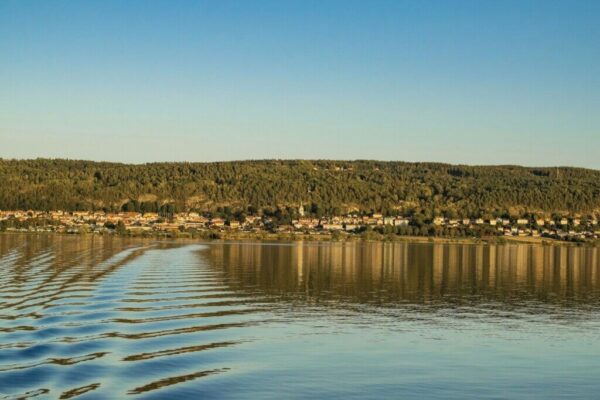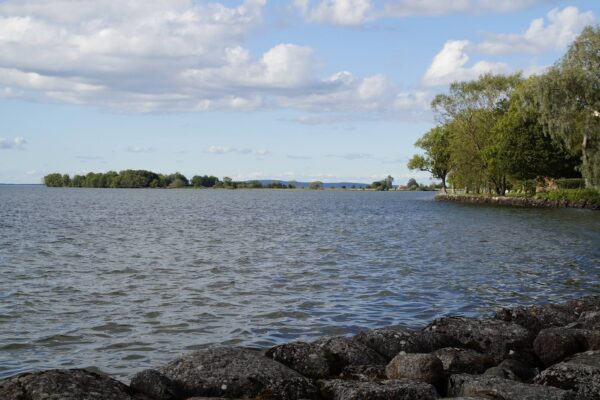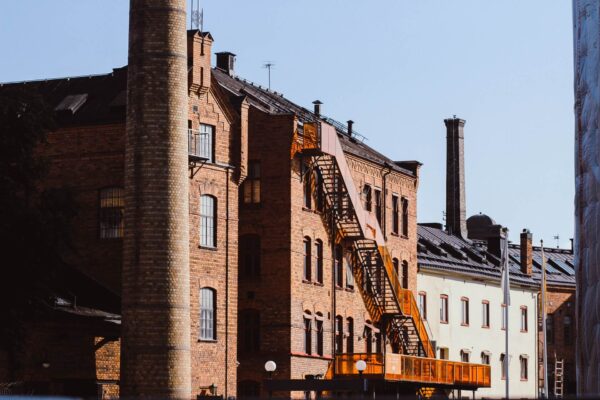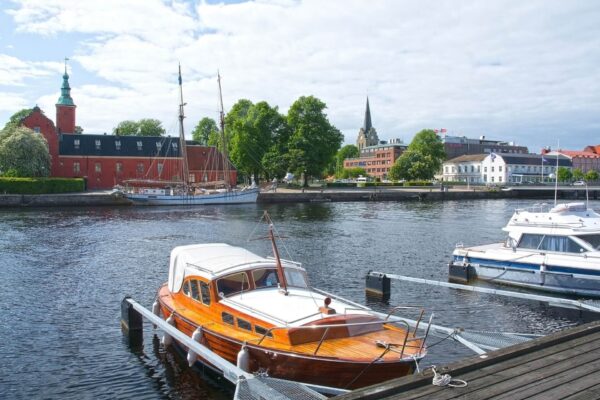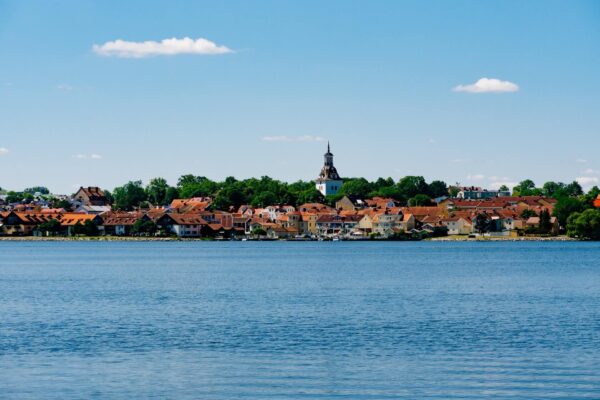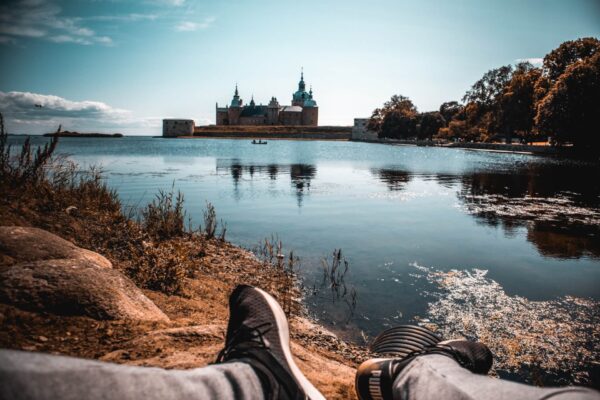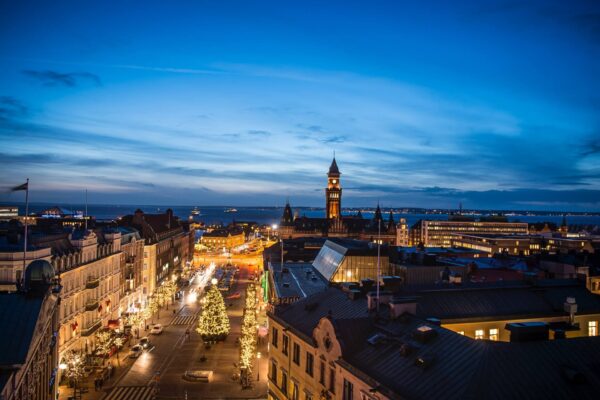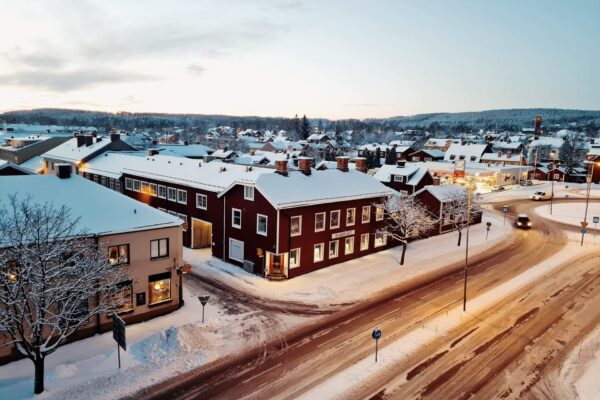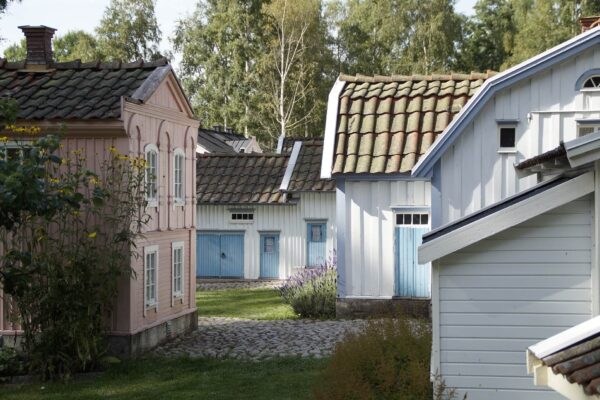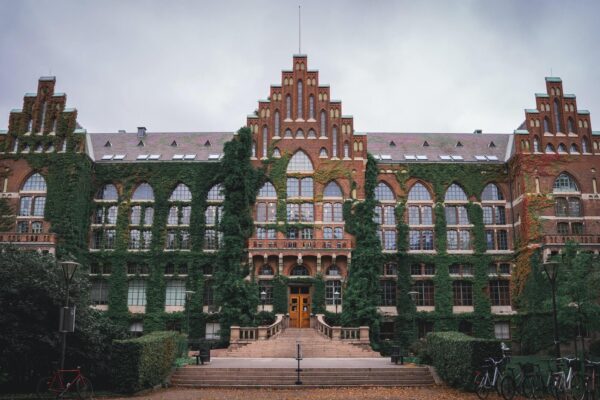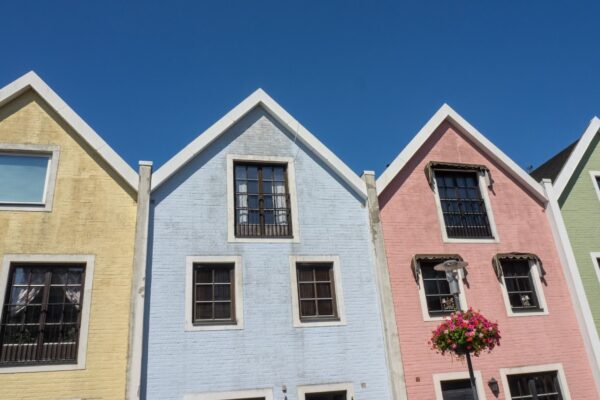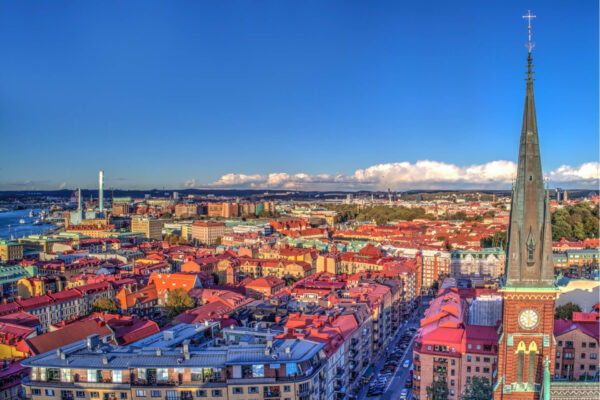Malmö is not only worth a day trip from Denmark’s capital Copenhagen, but also beyond. Sweden’s third largest city attracts visitors with its contrasting mix of modernity and tradition, art and culture as well as its location by the water. The music scene in the southern Swedish harbour city is particularly well known beyond its borders. You can find all the information you need for a trip to Malmö here.
Malmö is the capital of the southern Swedish province of Skåne and the centre of the municipality of Malmö with around 300,000 inhabitants. It is located in the far south of Sweden by the Öresund, the strait between Denmark and Skåne. In terms of population, Malmö is the third largest city in Sweden.
| Inhabitants (municipality) | 301,700 |
|---|---|
| Area | 77 km² |
| Historic province | Skåne / Scania |
Why travel to Malmö?
The harbour city, which is directly connected to Copenhagen via the Öresund Bridge, does not necessarily offer the typical Swedish feeling that is familiar from other places. Instead, Malmö is a particularly progressive and international city that is constantly changing. Here, old and new architecture mix and create exciting contrasts. Malmö is also known for its art, culture and music.
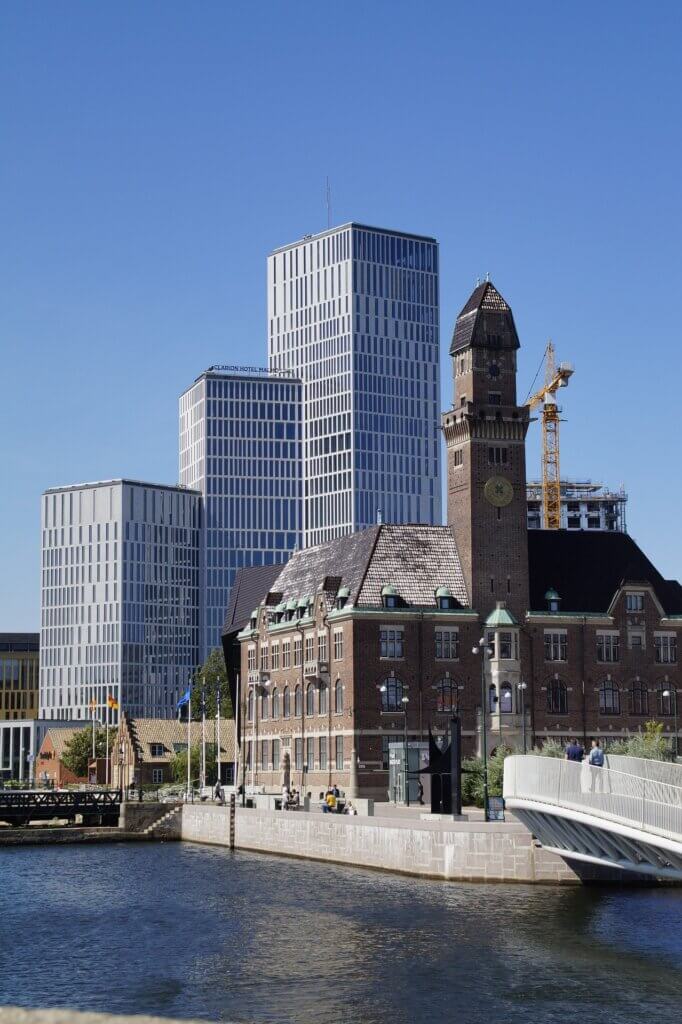
The former industrial city has only belonged to Sweden since 1658. Before that, it was part of Denmark. Its current dynamism and diversity can also be attributed to the fact that around half of its inhabitants are under 35 years old. If you like this exciting mix, you should definitely travel to Malmö.
The city is also recommended for all gourmets and foodies: Malmö has more pubs and restaurants per inhabitant than any other major city in the country.
Places of interest in Malmö
If you would like to discover the various sights from the water, you can take a boat tour through Malmö’s canals. The boats circle the city centre in around 45 minutes.
Turning Torso
The Turning Torso has been Malmö’s modern landmark since 2015. The eye-catching building with the twist and a height of around 190 metres towers above the rest of the city’s buildings. It is considered the tallest skyscraper in the whole of Scandinavia. Inside, there are 54 floors of offices and flats.

The sustainably built district of Västra Hamnen, the western harbour, extends around it on the former site of a shipyard. Further modern residential and office buildings are still being constructed here. All architecture enthusiasts should definitely take a look around and take a few photos.
Ribersborgsstranden and Scaniaparken
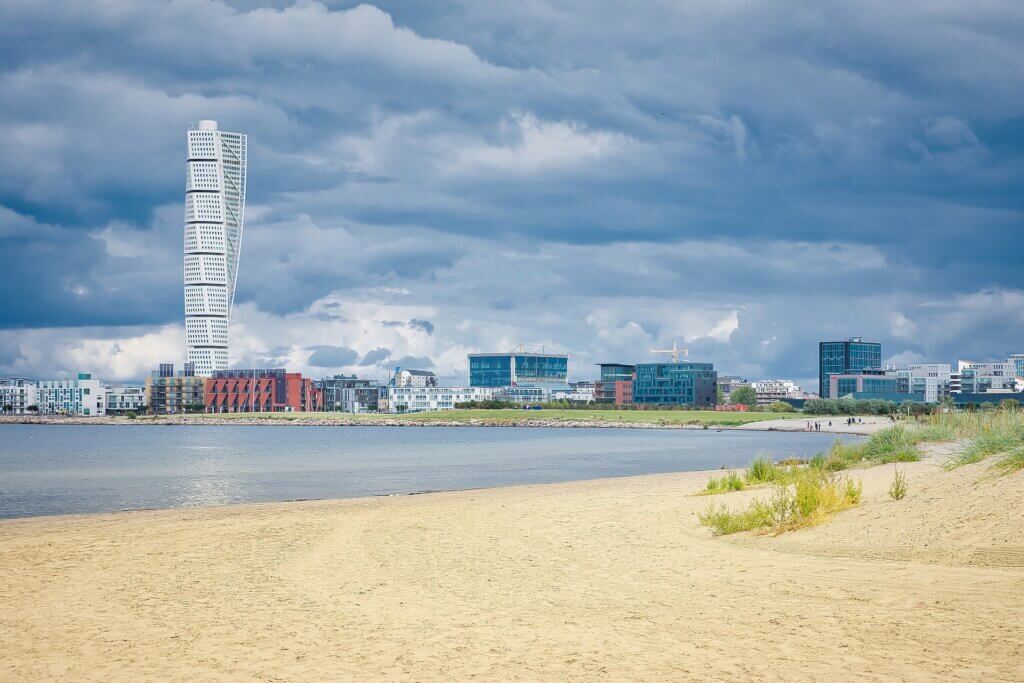
If you are travelling to Malmö in summer, don’t forget your swimming gear. The city has two beaches where you can go swimming. The long sandy beach Riberborgsstranden (“Ribban” for short) is located in the district of Riberborg.
Here you can visit the over 100-year-old cold bathhouse all year round, which has a sun deck, a restaurant and sauna. After visiting the sauna, you can jump into the cold water of the Baltic Sea. Jogging and beach games are possible at the beach as well.
The second beach in Malmö is Scaniaparken. Here, the water is more open and deeper. There are volleyball courts in the sand with a view of the Öresund Bridge.
Old Town

Malmö’s old town (Gamla Staden) offers historical flair and a selection of cosy cafés and restaurants – especially in the small market square Lilla Torget with buildings from the 17th and 18th centuries. But Malmö doesn’t just offer Scandinavian cuisine, it is also known for its culinary influences from all over the world. The Stortoget, where Malmö’s town hall is located, is larger and is where events take place.
Öresund Bridge to Copenhagen

Last but not least, Malmö is known for its direct connection to Copenhagen in Denmark, which crosses the Öresund strait: At over 7.8 kilometres long, the Öresund Bridge is considered the longest cable-stayed bridge in the world. The journey across the bridge from Malmö to Copenhagen and vice versa takes less than an hour by car – perfect for holidaymakers, as a trip from one city to the other is no problem. And it’s not just cars that can cross the bridge, trains also run regularly across it – the journey is even faster and takes about half an hour.
If you are not planning a crossing, you should definitely take a look at the large structure from the riverbank.
Malmöhus Castle
In contrast to the modern buildings in Malmö, Malmöhus is one of the oldest Scandinavian fortifications still standing. It dates back to the Renaissance of the 16th century. Today, it accommodates Malmö’s art museum and the city museum, which includes a neighbouring park as well. You can also visit a submarine and an aquarium.
Malmö Stadium
The Malmö Stadium is also famous for hosting numerous football tournaments and championships. It was built in 1958 for the Football World Cup and was used for the European Championships in 1992. An athletics centre is also part of the stadium. The stadium has hosted many concerts by international musicians. Malmö FF football club trains in the somewhat smaller Eleda Stadium, which can be visited.
Kungsparken & Slottsparken Malmö
Kungspark is the green heart in the centre of Malmö. Covering an area of 7.4 hectares, the park is one of the city’s largest green spaces and offers plenty of room for outdoor leisure activities. Kungspark is also the oldest park in the city: it was inaugurated by King Oscar II in 1872. The park, which is modelled on an English garden, is located in the city centre. Here you will not only find over 100 tree species from all over the world, a magnificent fountain and an old grotto, but also the city’s only casino.
Kungspark is connected by a bridge to Slottspark, which covers an area of 21 hectares. Originally a military training ground, the area was the site of a large trade fair in 1896 before being converted into a large green space. The castle park was opened in 1900 and features wooded areas, hills, viewing areas, various fairgrounds and a rock garden, as well as numerous bodies of water such as two ponds, a marshland and a spring. The castle park is also home to the municipal library. It is connected to the castle garden of Malmöhus Castle by a bridge.
Accommodation in Malmö
Hotels in Malmö
For a city trip, a hotel room that is centrally located in Malmö, is the ideal place to stay. The sustainable Hotel Ohboy, for example, is located close to the water and just 10 minutes from Malmö’s main railway station. If you want something a little more unusual, choose the Grand Circus Hotel, which lives up to its name. The rooms are located in circus wagons on a disused section of railway.
Practical: many hotels provide their guests with bicycles to hire. Malmö is a particularly bike-friendly city, which means that tourists can easily explore it by bike.
Camping in Malmö
Malmö is also suitable for campers. How about a pitch on a campsite right by the water with a view of the Öresund Bridge? In general, you will find numerous camping options in the Skåne region.
Holiday homes
If you are looking for a holiday home, the region around Malmö is ideal. Outside the city, the nature of Skåne awaits with its small villages and cosy houses. In the city itself, you will find hotel rooms as well as flats.
Travelling to Malmö
Flights
The fastest flight route to Malmö taking the Öresund Bridge is via Copenhagen-Kastrup Airport. Copenhagen is served by flights from many airports. You can then continue your journey to Malmö by train or rental car. Besides, the Öresundtåg (Öresund train) stops directly at Copenhagen Airport.
Cruises via Malmö
For all cruise fans, there are offers and routes that go via Malmö – so a day trip to the harbour city is guaranteed.
Weather in Malmö
Malmö has a typical ocean climate. The mild temperatures and low probability of precipitation in summer are ideal for travelling.
From May to September, the average temperature in Malmö is between 15 and 20 degrees, which is particularly pleasant if you spend a lot of time travelling around the city. If you want to go swimming, it is better to choose the period between June and August.
